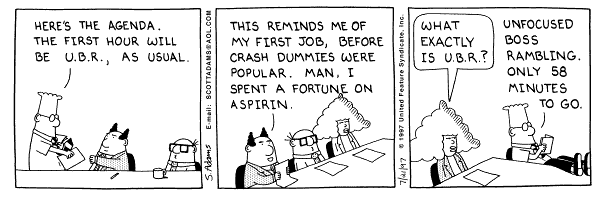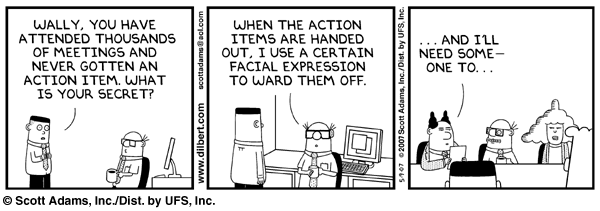The great dividing line between success and failure can be expressed in five words: “I did not have time.” Franklin Field
Since the start of this year my plate seems to be extraordinarily full. Days go by so quickly that it is becoming difficult to keep track of what is being accomplished and what things are being left behind. My action days are getting mixed up with my preparation days and everything seems to be moving too rapidly. Whenever I experience times like these I need to actually take a step back, stop auto piloting for a while and stop to reflect about what is really happening. If one does not do this, you get lost in the moment and one day blends into the next and pretty soon the day, week, month or year has passed you by. A story I re-read at such times is this one. It helps me put the bigger picture in perspective and clearly shows that the bigger things in life are what one needs to be focused on. If we continuously work on developing the little things, we forget the big rocks and after a while there is no more space for them.
Last year I wrote about the time management philosophy I follow which includes a mixture of preparation days, action days and relaxing days. In the last quarter of ’08 I started to integrate GTD a lot more into my life. Apart from the usual split of days for that system I also do three other exercises. The first one of these is to set some big goals for the month, chunk them down into smaller ones to be done weekly and lastly chunk them even further into mini steps to be done on a daily basis. The daily basis steps comprise of my “Most Important Tasks” for the day. These range anywhere from 2-4 tasks. It is important to take consistent action on the goals we are working on. Although I have some large yearly goals such as writing a book this year, I tend to keep most of my goals on shorter time frames. This adds the often much needed sense of urgency and stops me from procrastinating.
When I start to lose track of time it is either that I am focusing too sharply on micro goals and have forgotten the bigger picture, or the fact that mini steps are taking longer than usual thereby dragging my day. General frustration builds up when you work hard but do not get the results that need to be there. Being a highly result oriented person, when I begin to miss daily or weekly targets, flashing red flags force me to take a step back and re-evaluate what am I doing wrong, and gauge whether the path I have selected is truly the one I want to continue on. Having such built-in systems helps keep me on track, focused and provides the sense of motivation to get things done.
Start with simple steps and goals and steadily increase their number and complexity as you become more adept. Hopefully you will get more things done and see your productivity sky rocket.
Related Posts:

